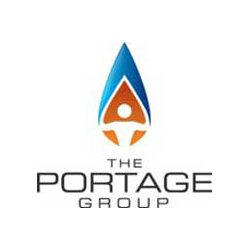How Associations Can Benefit from a Continuing Education (CE) Platform vs. a Standard Learning Management System (LMS)

In a rapidly changing world, it is crucial for associations to look for new ways to not only attract and retain members, but also generate non-dues revenue. For many associations, having a solid continuing education (CE) program has proven to be one of the most effective ways to meet these needs.
From the member perspective, access to quality CE programs is critical to ensure they stay up-to-date and have the required skills to remain competitive within their profession. Associations that offer members CE programs in easily accessible ways – whether as on-demand courses, live webinars or in-person sessions – are poised to increase both member satisfaction and non-dues revenue.
As online learning progresses for associations, it is no surprise that more technology vendors are continuing to enter the space. That said, what are some of the key factors that associations must consider when choosing a platform for their CE programs?
To start, a standard LMS can work wonders for an association offering education programs to members. These powerful systems can host courses, resources and certifications, allowing for intuitive management on both the front-end for users and back-end for administrators. They can provide huge time- and cost-saving benefits, offer extensive details on registration and completion, and run thorough user reports.
However, when it comes to offering CE programs for accreditation and to meet mandatory CE requirements, an association may have to look beyond a standard LMS.
A platform tailored for these purposes has specific capabilities that can add great value to both the association and its members. Below, we’ll explore three key features that differentiate a standard LMS and a CE platform for associations:
1. E-Commerce Functionality
A standard LMS may not come with flexible e-commerce functionality for member/non-member pricing and other tools to promote course sales. Associations that require users to go to multiple different sites to complete payment often see much lower sales of their online content.
Some advanced CE platforms allow associations to charge different pricing for members and non-members, and have the capability to administer coupon codes for associations to run specific promotional campaigns. Having the flexibility to charge different prices has some psychological benefits, as it reinforces to members the value of their membership and it may even entice non-members to become members.
By having a platform with flexible e-commerce functionality, associations can simplify life for their members. It ensures a seamless user experience that will only translate to higher non-dues revenue for the association. And through the integrated sales reports, the education team can further analyze relevant information to better inform their decision on the types of content to create for members.
2. Progress Tracking
Although a standard LMS can track when a user has registered and fully completed a course (i.e., at 100% completion), it may not have advanced tracking capability to see how far along a user is in their progress (e.g., 30% completion, 65% completion, etc.). This is a critical feature for CE purposes for both the users and the association, especially when the CE courses are for mandatory credits.
Some of the more advanced CE platforms also have tracking functionality for video-based courses, allowing users to start where they last left off (similar to Netflix). This is extremely useful for professionals who may not have the time to complete a full course in one sitting. For example, they can watch the first 20 minutes of a video, and come back the next day to continue exactly where they left off without having to start from the beginning.
Additionally, through advanced reporting features, an association staff can, for example, see that a user has been stuck at 40% progress for three months. For many associations, this is valuable information that helps them personalize their outreach and go above-and-beyond member expectations.
3. Meeting Specific Continuing Education (CE) Requirements
Depending on the primary target audience of the LMS, different features may be available. For example, an LMS geared for university students may focus on lengthy evaluation capabilities to allow professors to grade their knowledge at the end of a full semester. On the other hand, a platform focused on CE may offer more flexibility.
For example, CE courses can be on average one to two hours in length, while longer certification programs can often be completed within a few days. A platform tailored for professionals to complete CE may focus more on quick knowledge reinforcement questions throughout the course or a short quiz at the end of the program. The key takeaway here is that online learning requirements for high school and university students are not the same as those for professionals
looking for CE.
More advanced CE platforms further prevent skipping ahead on videos to ensure users go through the course in its entirety. Given that users who are completing CE courses typically have to track and report credits to their respective regulatory body, an automated certificate of completion can also be accessed once the user has fully completed the course. This reduces administrative work for the association staff as they no longer need to administer these certificates manually for members, thus allowing them to focus on more valuable initiatives.
Altogether, these three key features are significant enough to determine the success of CE programs for associations, as well as the level of non-dues revenue they can generate.
Members join associations that are tailored to their profession, and associations must consider a CE platform that is tailored to their program objectives and meets the needs of their members.
With the world changing at a rapid pace, having a robust CE platform can provide a tremendous opportunity for associations to continue to be a trusted source for members.





















